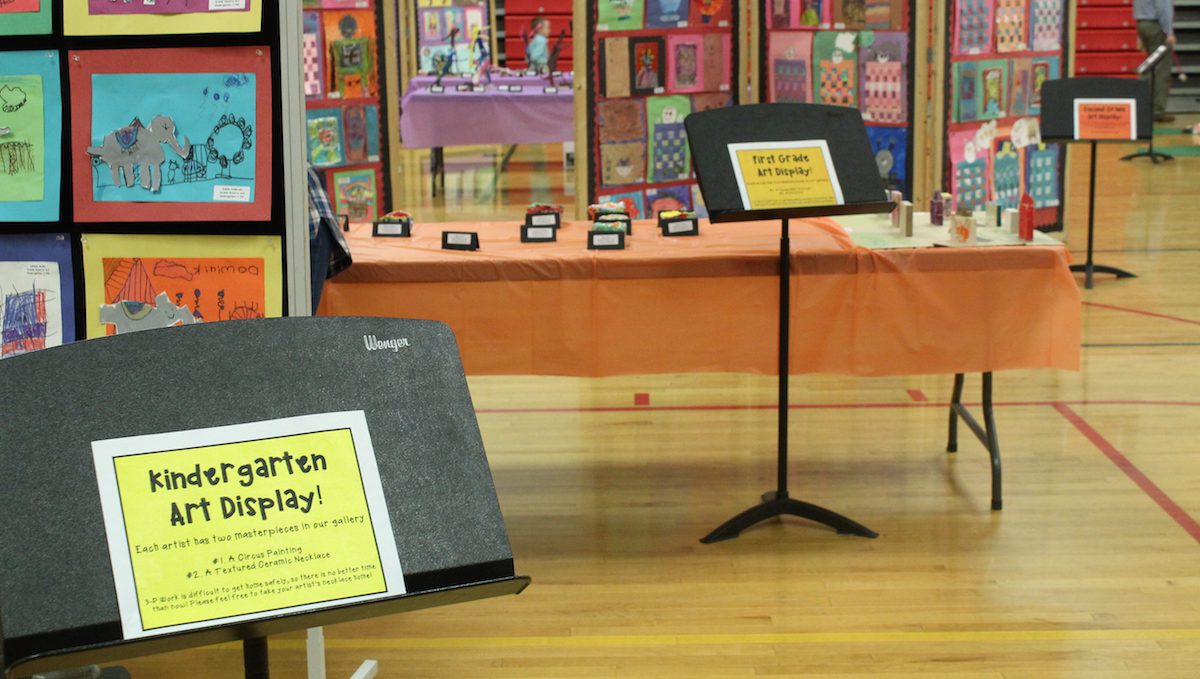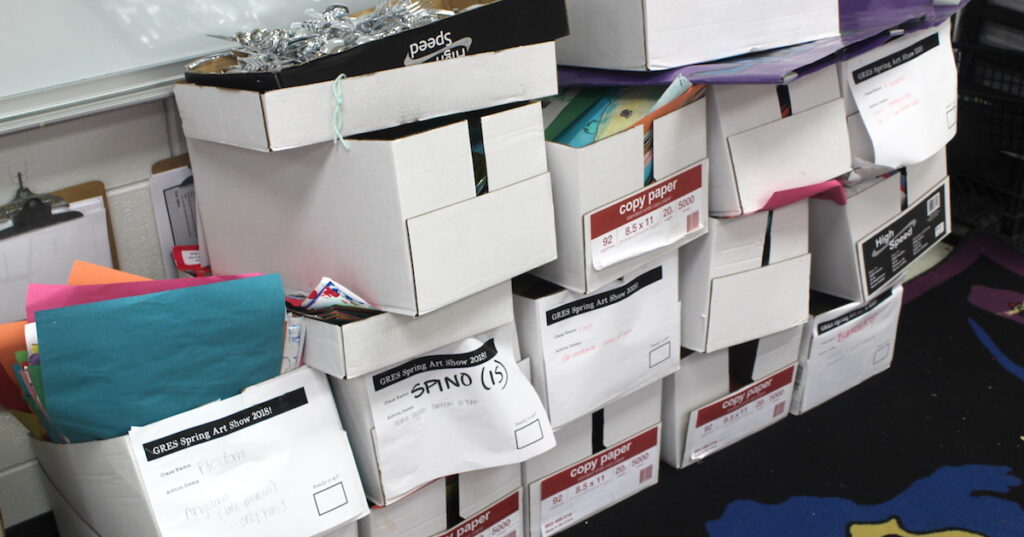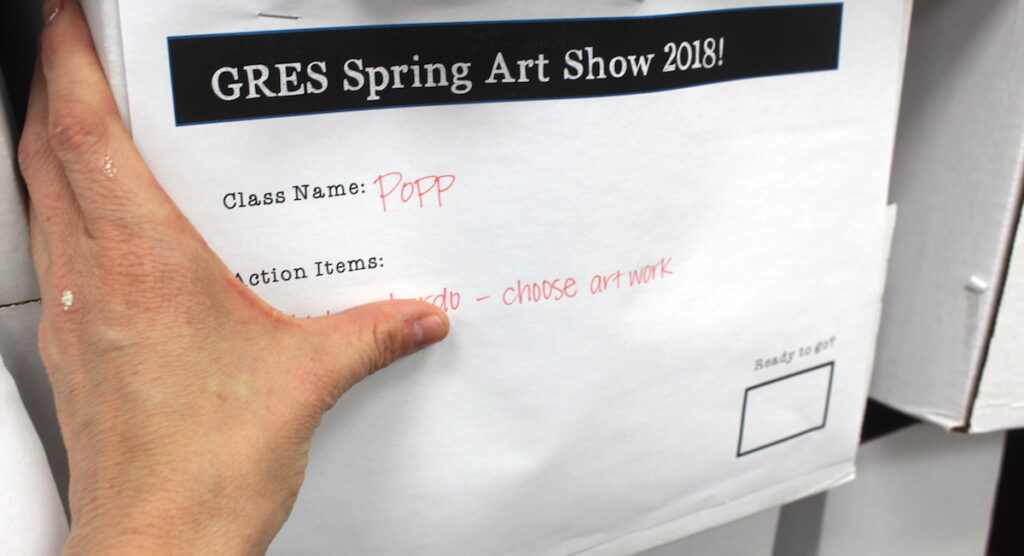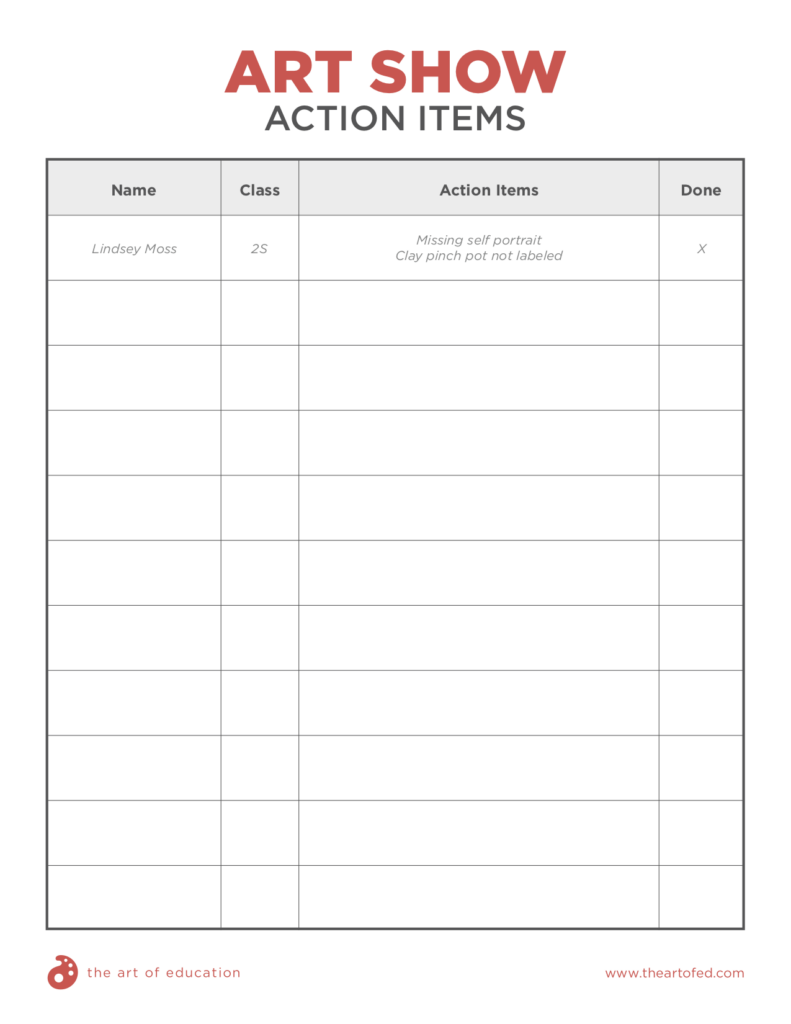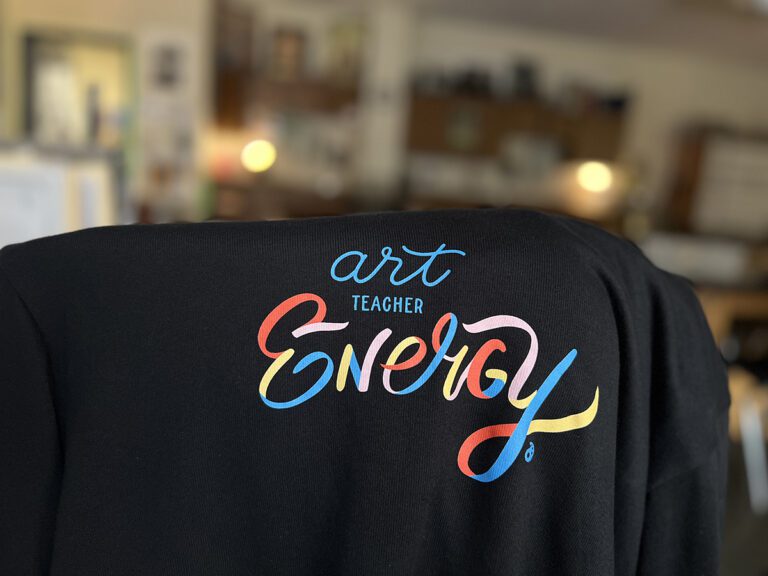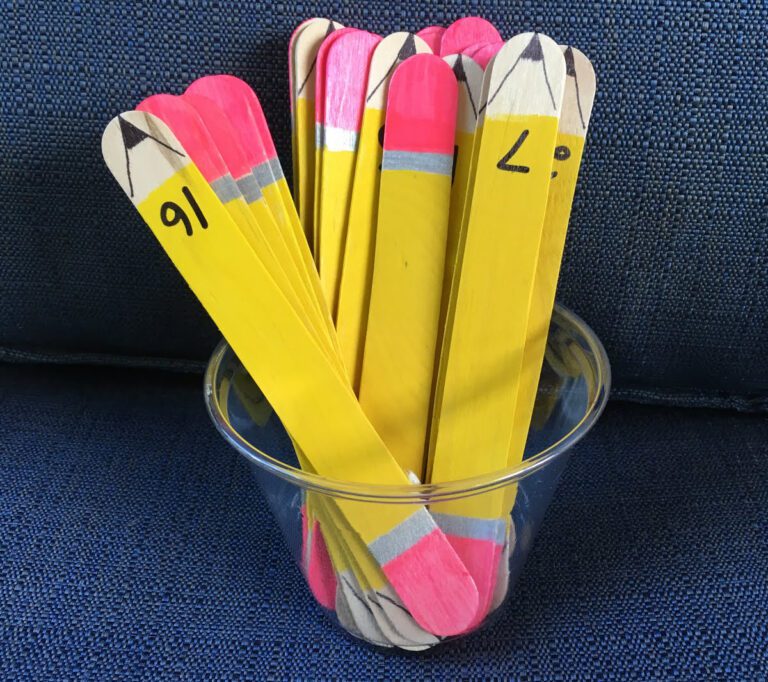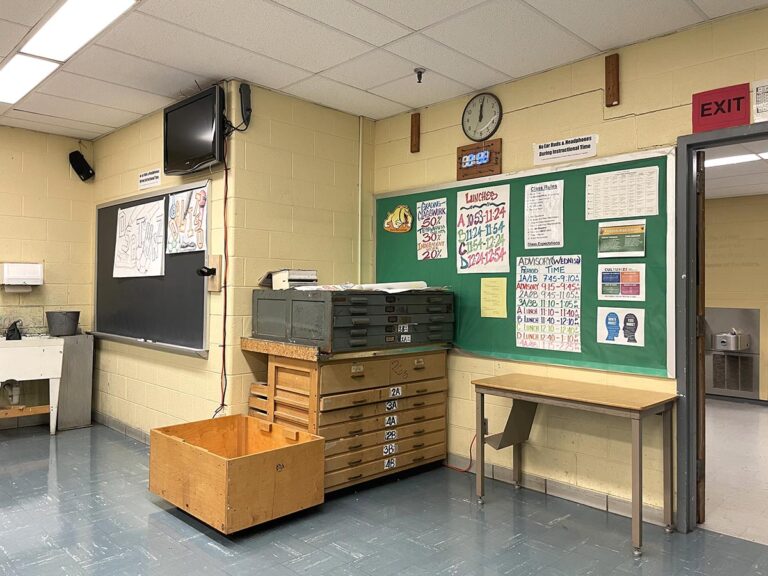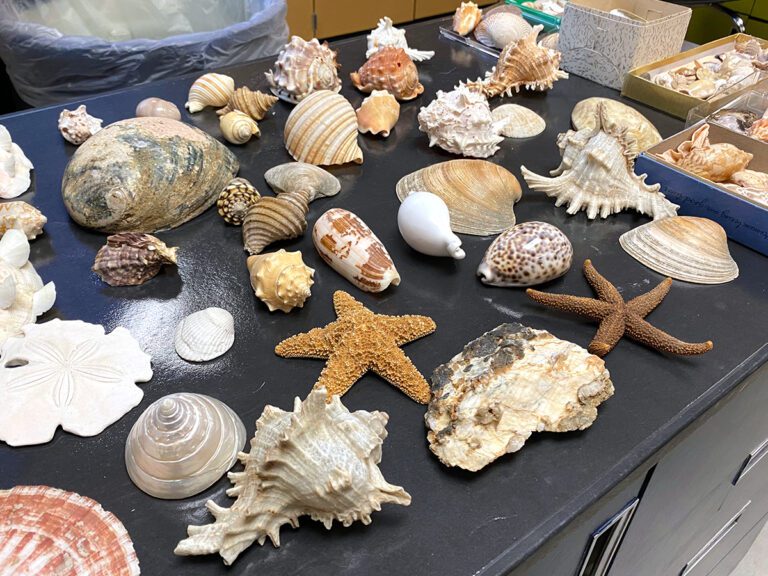Art show season is upon us! Spring art shows are simultaneously a deeply rewarding and infinitely stressful time of year for most art teachers. The typical school year is full of right-brained activities, focused on creativity and imagination. But, art show preparation requires a significantly different set of skills that are decidedly left-brained and organizationally focused.
How does an art teacher survive the cognitive shift art show preparations require?
Here are 5 practical tips to help you avoid art show chaos and preserve your sanity in the process!
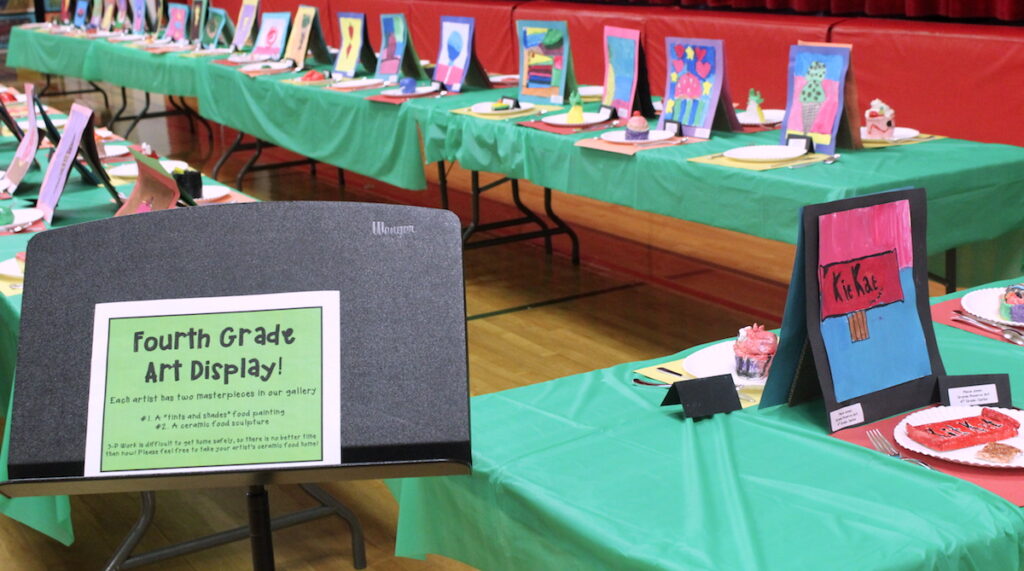
1. Be smart about storing art.
In my experience, the success of an art show is often a function of the thoughtfulness and time put into pre-show preparations. As a result, I tend to start sorting and labeling artwork weeks (and sometimes months) ahead of the actual art show. But, the challenge with early preparation is that too much time passes, and you are faced with piles of art you can’t remember sorting! Which class is this? Is it a complete class set or is artwork missing? That pile was assembled almost three weeks and forty-five cups of coffee ago, so who knows?!
Here is how I get smart about storing pre-show artwork:
- Gather a set of containers (one per each class you teach). I like to use copy paper boxes from my school’s workroom, but I have also used paper grocery sacks in the past

- Staple a class artwork tracking form to the container (make your own or save time with our free download below!)
- As you label artwork, record your progress on the class tracker form.

The advantage of a container system paired with a class artwork tracking form will be immediately apparent as you start to finally hang your show. You can tell with just a glance whose artwork is missing, what still needs to be labeled, and what is ready for immediate display.
2. Keep track of your “issues.”
My art show philosophy matches my teaching philosophy; all children are artists, so all children get honored at the art show by showing artwork equally. For me, this means my display features two artworks by every student, no exceptions.
But, “practicing what I preach” is not without its challenges. Committing to that volume of artwork creates a lot of issues for me. Mainly, instances where someone could potentially be forgotten.
These cases may include:
- Students who recently moved into the district
- Kids who transferred schools due to a program change
- Instances of extended absences (or absences on the days we selected artwork to display)
- Artists who self-selected an unfinished artwork for display
These factors all result in a long list of students who don’t have completed artwork in the above-mentioned boxes and are at risk for being forgotten in the crazy shuffle that occurs when getting a show ready. I keep track of each of these instances on a single form. You can download your free copy below. I keep a stack of these forms on a clipboard next to my laptop, so I can individually address everyone as the art show nears.
3. Don’t try to do it alone.
Your art show is the single most crucial advocacy event of the year, so don’t deny other people the chance to be involved in a project they might become passionate about! Arts education is essential, and your community knows it… so reach out for help!
Here are 4 populations you might not have considered enlisting.
- Your custodians
Frequently, an art show impacts the rhythm of the custodians’ work day. Begin your art show planning on the right foot by sharing the date and layout of the event to keep them in the loop. - Your PTO
Many parent-teacher organizations like to run spring fundraisers and are searching for ways to increase attendance at those events. Sound familiar? Reach out to your PTO to see if they would be interested in supporting your show by sponsoring something concurrently. This year my PTO ran a BBQ dinner night at the school during my art show. My students’ masterpieces were paired with a delicious dinner, and the community turnout was terrific. Both organizations benefited from this yummy partnership. - Older students
Learning to design an art exhibit is a valuable educational experience. Don’t rob your students of that experience by trying to do the whole thing alone! Whether you allot a class period for students to participate in preparations or allow interested kids to help during recess and after school, here are a few activities your kids can take over!
– Choosing artwork for display
– Counting and labeling artwork
– Making signs to explain concepts, ideas, or projects
– Physically hanging artwork, depending on the display space
– Creating invitations or posters advertising the event - School faculty and staff
Throughout the school year, art teachers typically do a lot of favors for their schools. Whether it is borrowing supplies, making a poster, or consulting on paint colors for someone’s kitchen reno; our colleagues are usually asking for our help. Well, it’s time to call in those favors! Ask your coworkers to help you with set up and tear down, and you might be pleasantly surprised by the response.
4. Maximize volunteers by minimizing the commitment.
In my experience, a critical factor in gaining volunteers is asking for a very defined and limited contribution. Requesting an open-ended commitment like, “Can you come help hang the art show?” usually results in only a handful of highly dedicated participants because people don’t have a clear sense of what they are getting themselves into.
In contrast, asking for a specific (and short) period of time seems to gather a much more substantial base of helpers. This year, I asked my staff for 25 minutes of help, directly after school the day of the art show. I was shocked when more than 17 teachers signed up to assist, and an art show of over 1000 masterpieces was put up in less than half an hour.
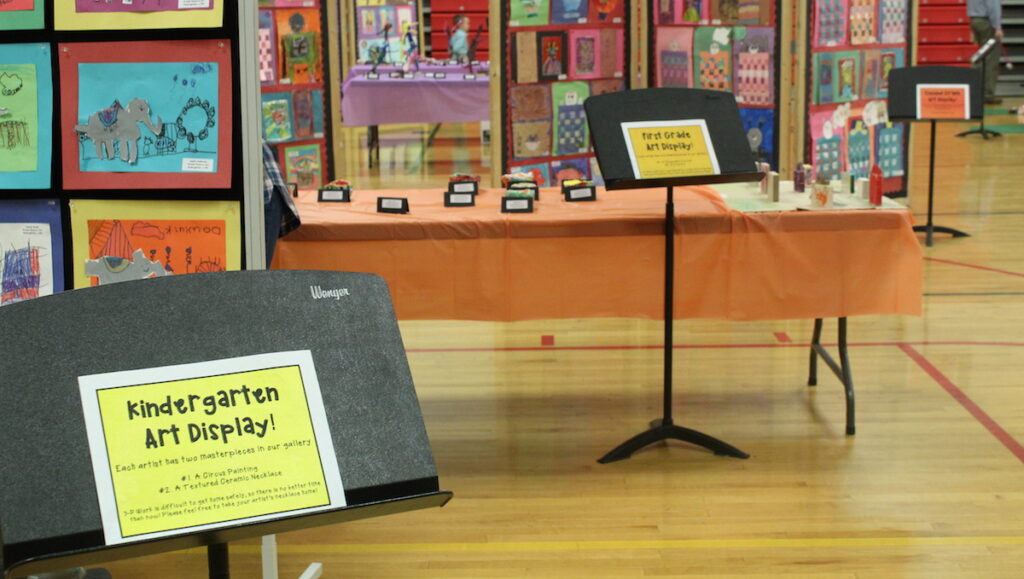
5. When in doubt, color code!
Finally, the last strategy for organizing the art show is to color code as many aspects as possible. A color-coded system will help you organize as you assemble the show and will also help your viewers navigate the art show efficiently.
- Begin by assigning each grade level a color.
- Use this color consistently for signage, tablecloths under 3-D work, and the backdrop for hanging artwork.
- Create a map of the exhibit for volunteers, featuring the coded color system, so they know where to set things up!
Finally, after implementing these tips and strategies, don’t forget to stop and enjoy the process. Take a breath and appreciate how beautiful and significant it is that we live in a culture where children’s art is celebrated in such a big way!
What do you do to add sanity to the art show process?
What tips do you have for organizing your show?
Magazine articles and podcasts are opinions of professional education contributors and do not necessarily represent the position of the Art of Education University (AOEU) or its academic offerings. Contributors use terms in the way they are most often talked about in the scope of their educational experiences.
